LB5. Soil: The Living Skin of Earth
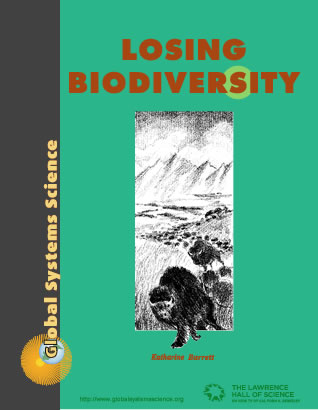
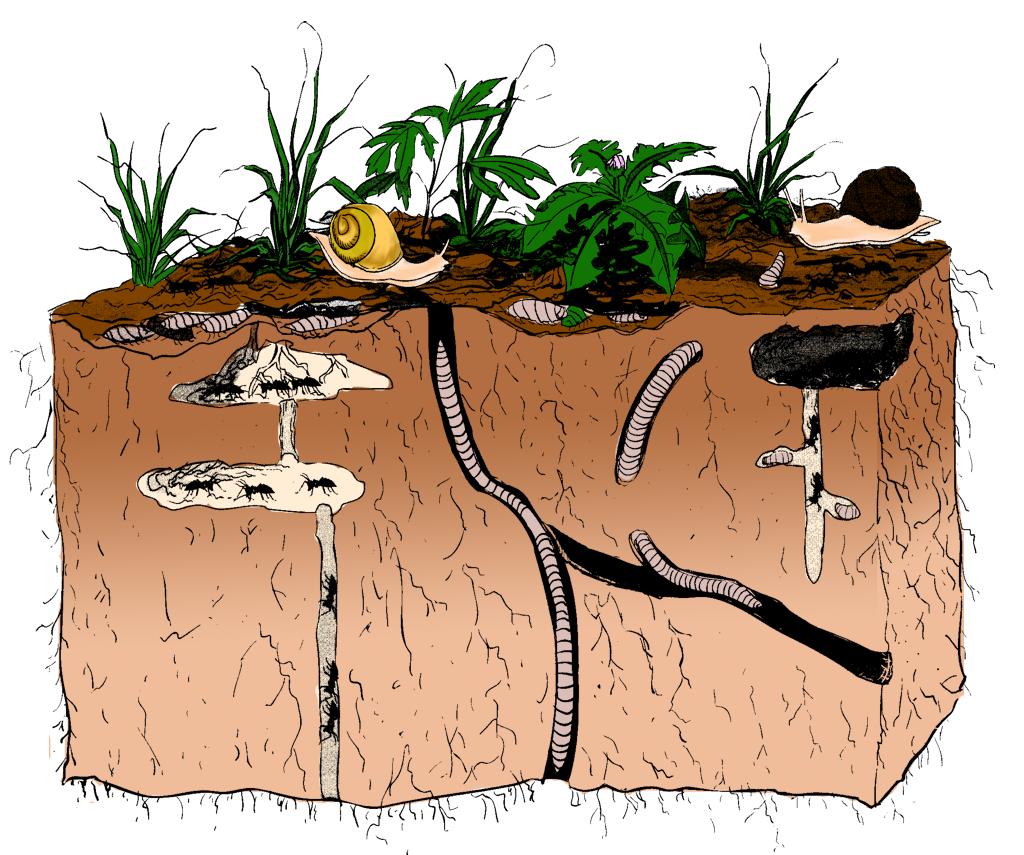
© 1992, Regents of the University of California.
Beneath your feet countless earthworms, insect larvae, crustaceans, and roots are sheltered by the tough fabric of the grass. Fungi and bacteria are dissolving away the dead bodies of tiny creatures, releasing nutrients for the plants.
The hidden world of living soil supports a rich variety of plant and animal communities across the continents of the world.
Most land plants cannot grow without soil. Even primitive mosses are found growing where moisture and some soil particles can be found. Human civilizations have grown up and prospered in areas with well-developed soils that will grow food. In regions where people have damaged the soil, the diversity of organisms and production of food have declined.
In this chapter we will learn how ecologists are studying the relationships between the diversity of plant species and the productivity of an area. We will also find out how people are combining efforts to restore degraded areas and conserve soil resources upon which our society and other species depend for food.
Rivet Popper Hypothesis
Suppose you were taking a trip on an airplane. The plane is crowded with many other passengers and you are lucky to have a window seat. As you look out you notice that there is a black spot on the wing. Looking more closely you can see that a rivet is missing. Further down on the wing you can see another place where a rivet is gone. Disturbed, you turn to the person in the seat beside you. “Look,” you say, “there are two rivets missing from the wing!”
Your neighbor calmly looks where you are pointing. “Don’t worry,” she says, “I’m an aeronautical engineer. These planes are so overbuilt that a few missing rivets won‘t matter.”
Just then you see another rivet pop out. It occurs to you that there are places on the wing that you cannot see. Are other rivets popping out unobserved? “But if there are some rivets missing won’t that put added strain on the others?” You ask your neighbor.
“That’s true,” she replies. “Can you see how many are missing?” She seems concerned.
“How many rivets can we lose before the danger point is reached?” you ask.
“I don’t know,” is her reply.
What has become known as the “rivet-popper” hypothesis was proposed in 1981 by Paul and Anne Ehrlich. This view of biodiversity uses the analogy of rivets popping off the wing of an airplane. Each rivet plays a small but significant role in the working of the whole plane, and the loss of any rivet weakens the plane by a small but measurable amount. Lose too many rivets and the plane will crash. Similarly, our planet’s ecosystems depend on a diversity of species to maintain themselves. The loss of each species changes and possibly weakens the ecosystem. At some point the loss will become so great that the ecosystem will fail catastrophically, and most life forms will be lost.
Redundancy Hypothesis
Some ecologists contend it is an exaggeration to say that every species is important. The “redundancy” hypothesis proposes that most species are more like passengers on the plane and that only a few keystone species are needed as “drivers” to keep the plane flying. Current efforts seem to indicate that the answer lies somewhere between these two hypotheses: that every species, or “rivet,” counts; versus only a few keystone species as “drivers” are necessary to maintain ecosystem stability.
I. Research on the Prairie
The idea that species diversity provides “insurance” against catastrophe is supported by the work of David Tilman and John Downing. They set up an experiment in a prairie grassland north of St. Paul, Minnesota to investigate how the numbers of different plant species affect plant production levels.
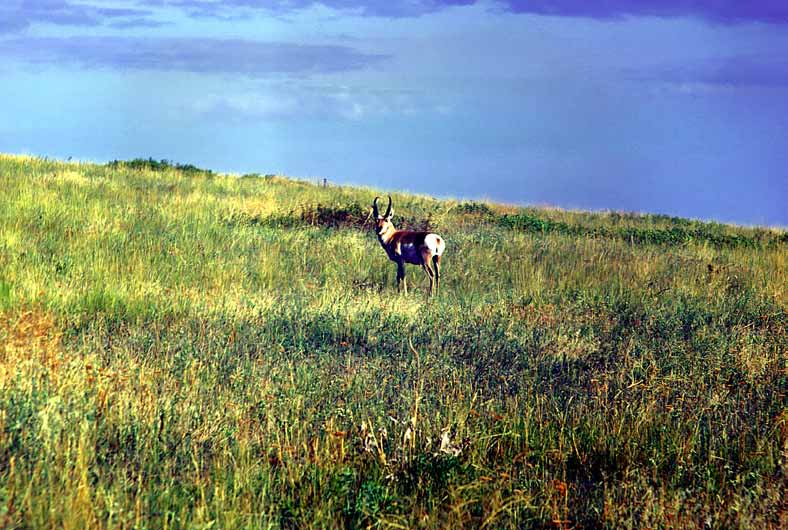
They measured plant productivity by weighing samples of plants periodically on plots located in native prairie and three abandoned fields of different ages.
Prairie photo by Reginald Barrett
During a severe drought in 1987-1988, productivity in all the plots fell drastically. However, it dropped only one-fourth as much in the most species-rich plots compared to the most species-poor plots. The species-rich plots recovered their former productivity in one season compared to the four seasons it took for the less diverse plots to recover. A key factor seemed to be the diversity of types of plants and not just the numbers of species. For example, a plot with grasses, bulbs, small shrubs, and nitrogen producing plants like clover, tended to produce more plant matter than a plot with an equal number of different grass species.
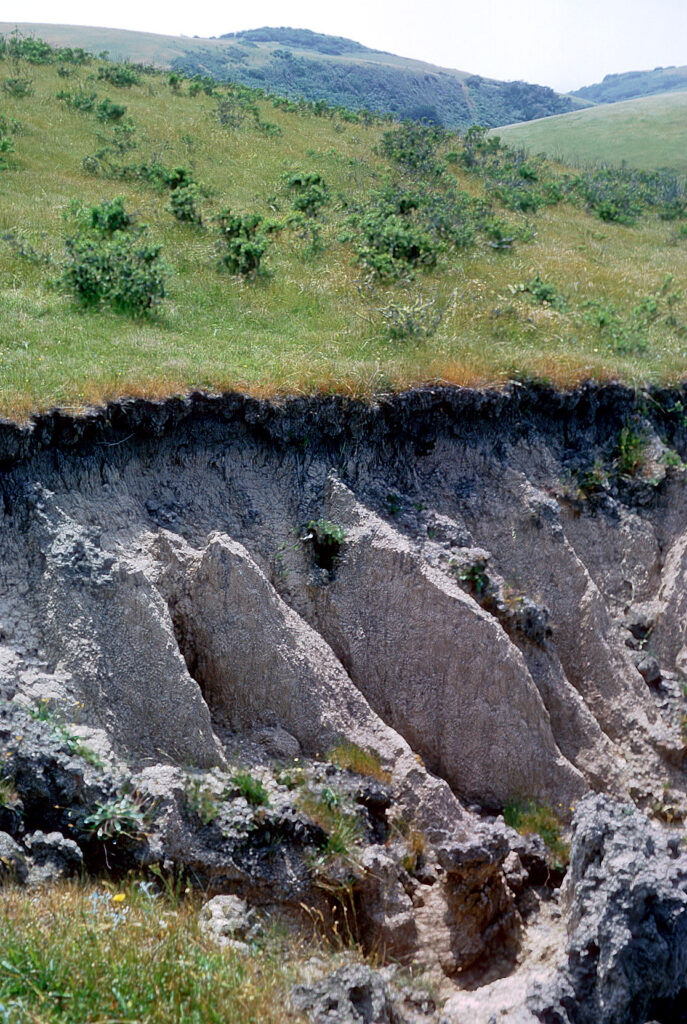
Tilman points out that even though ecosystems may be able to tolerate some random losses of species, today’s human-caused losses tend to be systematic—such as logging specific species of trees, or cattle grazing that targets particular grasses. He cautions that these selective losses of diversity may be more likely to alter the productivity of ecosystems than random loses caused by natural catastrophes.
Soil erosion photo by Reginald Barrett
II. Research in the Ecotron
Ecologists Shahid Naeem and John H. Lawton designed a study using a series of controlled environmental chambers at a facility called the Ecotron near London. They set up 14 miniature ecosystems, each containing 80 plants representing either 2, 5, or 16 species. Insects, soil organisms, and growing conditions were kept the same for all of the artificial ecosystems.
The scientists suspected that a change in the number of plant species might affect various processes in an ecosystem. They measured how much water stayed in the soil, amounts of nitrogen, phosphorous, and potassium taken up by the plants, and decomposition. Their key findings include:
- As species numbers in the mini-ecosystems increased, average productivity increased.
- The most species-rich systems consumed the most carbon dioxide and produced the greatest mass of plant matter.
- The species-rich systems that included various plant types, such as vines, captured more light and produced more plant matter.
The scientists hypothesized that loss of diverse plant forms may have more impact on productivity in a forest than the loss of some of the actual trees. In a tropical forest, for example, understory palms and epiphytes (plants that live in the branches of trees) are able to thrive on sun flecks filtering through the canopy.
World’s Productive and Potentially Productive Land
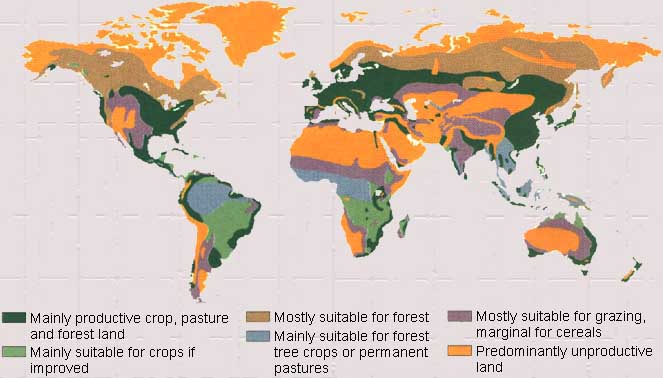

LB5.1. Investigation: Comparing Soils
Investigate the components of soil, including both humus (organic matter) and the non-living soil components.
III. A Lesson From Prairie Soil
In Chapter 2 we learned how, in less than a century, the prairie was transformed from a sea of rich grassland covered with bison and pronghorn to agricultural lands fenced for crops, cattle and sheep. The North American prairie is actually made up of three sub-types that blend into each other, moving westward from the Mississippi River. The deep, moist soils of Iowa, Eastern Nebraska, and Kansas supported the tall grass prairie, which is now 98% agricultural land. Next was the mixed grass prairie, followed by the short grass prairie, which covered the more arid lands from Texas to Montana.
Scientists have been taking a bug’s eye view of a small area of prairie rescued by the Nature Conservancy—the Konzo Prairie which is managed by Kansas State University. Digging down beneath the mat of roots, they find a rich, dark chocolate soil teeming with earth worms, nematode worms, mites, and insect larvae. These tiny tunneling organisms, “eat” and churn the soil, improving it for plant roots. An amazing 75-85% of the prairie’s living matter is underground, working all the while to capture and recycle carbon, nitrogen and other soil nutrients. The masses of roots protecting the precious soil apparently live for hundreds of years, producing new vegetation without cultivation.
Take the same close look at a typical acre of Kansas farmland that is plowed and planted, fertilized and sprayed each year with pesticides and herbicides. The complex structure of the loam soil has been broken down, and most of the soil organisms exterminated. The annual plowing depletes the soil as wind and rain carry the clay particles into streams and rivers. To keep crop production high, farmers must spend more and more on chemicals, machinery, fossil fuels, and erosion control.
Researchers at the Land Institute in Salina, Kansas, want to develop new crops from prairie natives. They also hope to develop new agricultural methods that take advantage of the hardy fertility of native species. The idea would be to grow mixtures of deep-rooted perennial plants that are drought resistant and produce crops at different times of year. This could help farmers build their soil resources while reducing the use of chemicals and water.
Prairie to Dust Bowl
Overgrazing and poor farming practices have reduced the fertility of the soils over large areas of the mixed grass and short grass prairie. During the droughts that occurred in the 1930’s, huge areas of once-fertile land became a giant dust bowl.
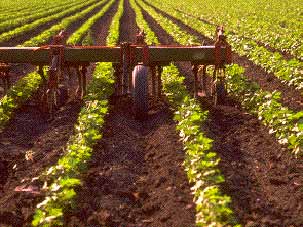
Farms and ranches were abandoned and thousands of poor families fled to California hoping to find jobs. John Steinbeck’s novel The Grapes of Wrath describes this desperate time for America’s western farmers.
Private lands weren’t the only ones damaged by overuse. In the Great Basin states of Utah, Nevada and Arizona, large areas of public land under the Bureau of Land Management (BLM) were also degraded. Ranchers can lease the public lands for a modest fee, and the BLM was not vigilant in preventing overstocking of the range. The BLM also assisted ranchers in eradicating predators such as mountain lions, wolves, coyotes, and bobcats from public and private lands.
Following the end of the Great Depression a national effort was launched to teach farmers and ranchers how to prevent erosion and restore the fertility of the land. The solutions usually required a reduction in the number of cattle or sheep per acre. To this day, there is a struggle between ranchers and farmers trying to raise as many cattle as possible to support their families, and scientists recommending conservation of the soil and wildlife.
Putting Nature Back to Work
The Great Plains bison herds once rivaled the Arctic caribou of the tundra for annual production of plant matter and large animals. Research at the Konzo Prairie is improving our understanding of how bison contributed to the fertility of the prairies.
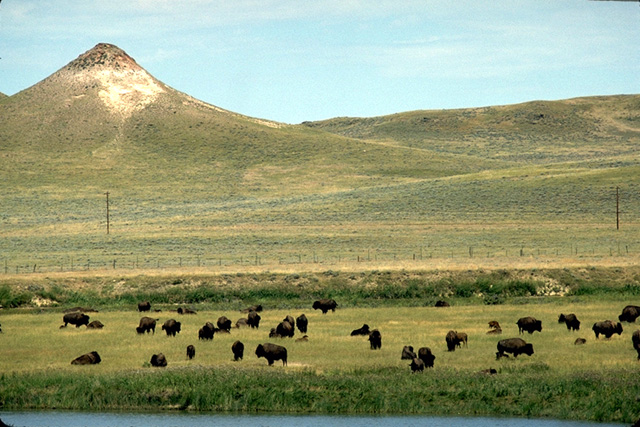
The bison create micro sites through their patchy pattern of grazing, wallowing, and rubbing. Scientist David Hartnett found that the feeding and activities of bison actually increased the plant diversity in pastures by 19-54 percent. On comparable sites where cattle were carefully stocked at moderate densities, plant diversity increased by 2-24 percent.
Bison on a South Dakota prairie
The bison’s good reputation is spreading. The gigantic free ranging herds are gone forever, but a growing number of land owners are investing in the hardy bison. It is able to survive harsh winters while producing plenty of good, lean meat without the use of hormones and antibiotics. More than a thousand ranches across the United States have turned to raising bison.
A Cure for the Common Cold?
The purple coneflower (Echinacea angustifolia) is an attractive and widely cultivated prairie flower that was used as a medicine by Native Americans and settlers. The species contains chemicals with painkilling and anti-inflammatory properties, that also appear to stimulate a person’s immune system. Echinacea tea is available in many supermarkets today.
Native Americans are also returning to their historical ways of tapping the natural productivity of the land. The Inter Tribal Bison Cooperative is composed of 51 member tribes who are working to restore the bison to Indian culture. The Cheyenne River Sioux Indian Reservation is one example of many Indian communities that have begun to restore their land and traditions with wildlife as a source of inspiration and productivity.
Scientific research has been essential in providing information to better understand the ecological forces shaping the plant and animal communities of the Great Plains. Perhaps the greatest challenge ahead for land owners, resource agencies, and conservation groups, is how to cooperate with each other and with scientists. Working together these stakeholders could develop models for restoring and sustaining natural resources while maintaining human communities.
See Plant and Soil Sciences eLibrary for more in-depth material on plants and soils.

